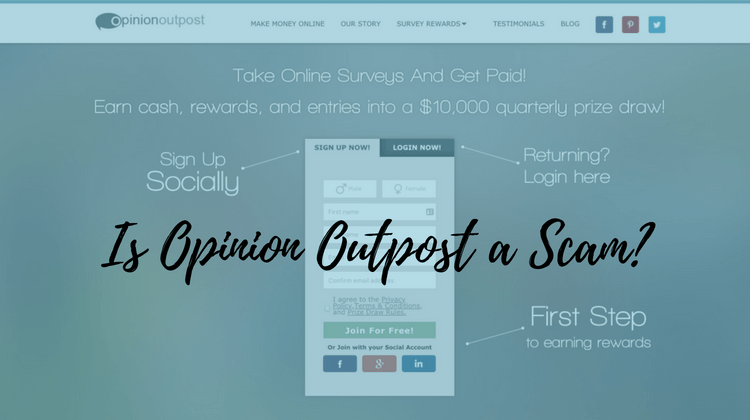How To Blog About Health (Step-By-Step Guide)

Health, wealth, and relationships — three blog niches where opportunity always exists. And guess which one tops the list every time for profitability? Yep, that would be health. Makes sense when you think about it because what’s more important than being mentally and physically fit, right?
The topic of health and its hundreds of sub-niches dominates the web and there’s no reason why you can’t have a voice too.
In this post, I’ll show you how to blog about health with action steps you can apply straight away.
Ready to get started? Let’s dive in…
STEP 1: DEFINE YOUR PURPOSE
Why do you want to start a health blog? Is it to document your personal health journey? Build an online community? Start an online business? Spending time reflecting on this question will help determine the direction to take your blog.
If you’re just writing for yourself, pleasing others probably isn’t your biggest concern and that’s fine. But it’s difficult to earn income from a blog that focuses solely on personal experiences.
If your plan is to make money with your health blog, your main focus needs to be on helping and inspiring others and being passionate enough to stick it out until you see results.
STEP 2: CHOOSE A NICHE FOR YOUR HEALTH BLOG
Health is a HUGE niche and far too big a subject to tackle with a single blog. Instead, you want to focus on one subset and cover everything about it. Take Confined To Success for example — while I blog on several topics relating to chronic illness and disability, my main focus is on helping chronically ill and disabled individuals take better control of their lives financially. Similarly, you want to find an angle for your blog.
With that said, here are some possible directions to take…
Health Blog Topics
Alternative Treatments
- Bee Venom Therapy
- Coffee Enemas
- Hyperthermia
- Ozone Therapy
- Stem Cell Therapy
Awareness/Preventative
- Alcoholism
- Bulimia
- Opiods
- Smoking
- Suicide
Chronic Illness/Disability
- Cancer
- Fibromyalgia
- Lupus
- Lyme Disease
- Multiple Sclerosis
Diets/Recipes
- Juicing
- Mediterranean
- Paleo
- Vegan/Vegetarian
Fitness
- Bodybuilding
- Running
- Pilates
- Triathalon
- Yoga
Mental Health
- Happiness
- Law of Attraction
- Motivation
- Positivity
- Spirituality
Services
- Caregivers
- Occupational Therapy
- Nursing Homes
- Physical Therapy
- Hospice Care
Weight Loss
- Belly Fat
- Gastric Bypass Surgery
- Obesity
- Skinny
- Fat
Workouts
- Crossfit
- Insanity
- P90X
- Tae Bo
- Zumba
Now, many of these sub-niches are still too big (e.g., yoga, cancer, physical therapy, etc.) In this case, try to drill down even more and/or pair it with a specific demographic (e.g., men, women, seniors, teenagers, boys, girls, adults, kids, etc.) Here’s what I mean…
Bodybuilding for women over 50Bulimia and teenage girlsOccupational therapy for toddlersBee venom therapy for Lyme DiseaseCancer in dogs
Any of these examples could work well for a health blog!
Now, this technique doesn’t apply to all niches because the target audience would be too small (e.g., ozone therapy for teenagers, etc.) That’s why you need to check Google first to see what the search results show.
Whichever niche you choose, make sure you understand your target audience to gain readers’ trust.
STEP 3: SET UP YOUR HEALTH BLOG
Getting your health blog up and running is outside the scope of this article but here are the core steps to the process so you know what to expect…
- Decide on a name for your blog – There are many website name generators but my favorite is namemesh.com.
- Register your domain name and set up hosting – Oftentimes, companies do one or the other but the one I use handles both AND automatically installs WordPress — the most popular content management system for blogs.
- Choose a theme for your blog – A theme is what gives a website its “look and feel” or “skin,” if you will. Aim for a clean, minimalist and responsive theme that’s user-friendly and accessible. Also, use colors that evoke “health,” especially greens, yellows, blues and white. But don’t go overboard, 2-3 colors are more than enough for your color scheme. (The service I use to host my websites also offers dozens of free themes to choose from).
- Install plugins – Plugins are add-ons that give websites extra functionality like pop-up windows, social media buttons and email opt-in forms. There are literally thousands available to choose from! But don’t worry, there’s only a handful you really need to run a successful website.
- Set up Google Analytics and Google Webmaster Tools – These tools will help you to identify traffic patterns and problems concerning your website — two must-haves when running a blog.
This process might seem daunting if you’ve never set up a blog before but it’s actually not that hard. For free step-by-step training, check out this awesome online learning center (I’m a member myself and will gladly help you out once you sign up!)
STEP 4: WRITE POSTS FOR YOUR HEALTH BLOG
1. Decide What to Write About
Once you’ve identified a niche for your health blog, start thinking about the kind of content you’re going to write. Here are a few suggestions to get the ball rolling…
- Share basic/introductory information
- Answer commonly raised questions (Quora is a good source).
- Write product reviews (e.g., supplements, cross-trainers, books on healing, etc.)
- Conduct written interviews with authorities in your niche
- Report on the latest news (Google News, Twitter and Reddit are good sources).
- Feature an interesting infographic (can be outsourced on Fiverr or Upwork; Alternatively, design your own using Piktochart)
- Promote upcoming events and recap afterward (e.g., lectures, fundraisers, activist causes, etc.)
- Describe a typical day
- Invite guest posts
- Create top 10 lists of products and services
2. Do Your Research
Unless you’re an experienced medical practitioner or a personal blogger, you’re going to have to do research for the majority of articles you write. Perhaps even more so for a health-related blog where misleading readers with inaccurate information can land you in a heap of trouble!
This doesn’t mean you should avoid discussing tough or controversial subjects — you just have to make sure you’re able to back up your claims with hard facts before hitting ‘publish.’
Now, each article you write should tackle one topic and one topic only. For instance, it’s better to limit your post to the health benefits of green tea than attempt to cover every aspect of green tea (e.g., its history, how long to steep it, best brands, etc.) In short, you want to keep your article laser-focused.
But it’s not enough to have an idea of what to write. You also have to check whether other people would be interested in the subject matter too! After all, it doesn’t make sense to spend hours writing about a topic no one cares about (unless you’re writing for your own amusement, of course).
So, how do you do that? Through keyword research.
With keyword research, your goal is to identify commonly searched-for terms with low competition. Now, you can use Google’s Keyword Planner to help out but a better keyword tool like Jaaxy can speed up the process significantly.
Once you find a good keyword, you’re ready to start your research! Simple Google searches, eHow, and Wikihow are good starting points as well visiting other bloggers in your niche. Tools like Evernote and Workflowy are great for note-taking but a simple notepad will also do.
3. Create an Outline
While it’s tempting to start writing after completing your research, it’s not the best approach. For one thing, it’s harder to piece everything together and second, it takes longer to write.
Instead, organize your information into a coherent outline consisting of an introduction, support, sub-points, and conclusion (remember grade-school English?) And where relevant, work in the five “w’s”: who, what, where, when, and why.
4. Write, Write, Write
Opening Sentences
Nowadays, attention spans are short (especially online) so unless you grab readers’ attention in the first few seconds, you’ll likely lose them. That’s why your first few lines are super important. So, here are some suggestions to keep your visitors reading:
- Make a bold statement
- Cite a controversial quote
- Ask a question
- Share an interesting fact
- Tell a personal story
- Set up an imaginary scene
Main Body
A common mistake many health bloggers make is using medical jargon to appear more authoritative in hopes of attracting more readers. Don’t do this!
Visitors don’t want to read a glossary, they want tough concepts presented in everyday language they can understand.
Furthermore, they want to see a real personality shine through and feel as if you’re personally talking to them. And if you’re willing to open up about your own health struggles in the process, all the better. This is how to connect with an audience and start building trust.
But there’s a caveat…
You might want to tone down the doom and gloom, especially if you’re naturally solemn to begin with. While people appreciate authenticity, most don’t want to read a health blog that makes them feel bad about themselves and their state of affairs (there are enough health forums for that!)
So, where possible, always offer hope and point out the wonderful life that awaits them because even in the bleakest of times, things can change. [source] And that’s a core message of THIS blog, despite my own hardships.
Another suggestion…don’t use your blog to rat out bad doctors, practitioners and/or clinics. There are plenty of places on the internet that allow you to air out your grievances but your blog shouldn’t be one of them. It doesn’t look professional and it’s not worth the risk of getting sued for defamation!
Okay, let’s now move on to some writing tips…
- Aim to write 1000+ words per article – Longer, in-depth articles tend to rank better in Google so make sure the majority of your posts are comprehensive.
- Avoid long sentences – In the online world, people scan text more than read it — a harsh reality for bloggers who pore over every word. To make your text more digestible, keep your sentences short and stick to paragraphs of 75 characters or less.
- Make your text visually stand out – Where possible, bold and italicize select phrases and use plenty of bullet points to help differentiate text.
- Intersperse text with engaging images and video – A huge block of text without any visuals can quickly bore readers so make sure to include a few where possible. For awesome imagery, check out Pixabay and Pexels — two of my favorite free stock photography websites. And to manipulate images, give Canva and Pixlr a try. In regards to video creation, Screencast-O-Matic is a great free tool or simply find a video on YouTube and embed it in your post.
- Use call-to-actions – Whether it’s inviting readers to subscribe to your email list, buy a product, fill out a survey, ‘Like’ a post, or redirect them to another article of yours, make sure to include some type of call-to-action at the end of every post.
- Optimize your posts for SEO – Getting good at search engine optimization (SEO) ensures higher search engine rankings for your posts.
5. Edit and Edit Some More
Articles riddled with spelling mistakes, bad punctuation and poor grammar doesn’t look professional. That’s why it’s a good idea to read over your posts a few times to check for errors (including out loud!)
As a last once-over, copy your text into Grammarly, Hemingway and the Readability Test Tool (in that order) to look for any mistakes you might have missed and finalize your articles for publishing.
STEP 5: GET SOCIAL
So you publish a new article you’re really proud of and now you’re ready to take a well-deserved break. Well, sorry to break the news to you but you’re just getting started!
If you expect your articles to get the attention they deserve, you have to do more than rely on SEO for traffic — you need to start connecting with people online! Here are some ways how…
Blog Comments
Conclude your articles by encouraging readers to leave a comment and make sure to always reply. This is a great way to keep the conversation going.
If the comment happens to be a question you’re unable to answer, admit as much! (This goes back to my point about being authentic.)
Oh, and don’t be discouraged by trolls who try to bring you down at every chance. [source] So long as you stay the course and continue to believe in what you’re doing, you’ll come out on top. 🙂
Social Media
Facebook, Twitter, and Pinterest can bring a lot of traffic to your blog if done correctly. Start by following groups and individuals in your health niche. Many will subsequently follow you back and when they do, make sure to initiate and contribute to discussions. Once you’ve built a level of trust, people will be more receptive whenever you post links to your articles (just don’t do it too often, once per day is fine).
To speed up the process, a free service like Hootsuite will post your article links quickly and reliably to several social media platforms simultaneously.
Now, alternatively, you could pay for ads on these platforms and bypass all this ground work but then you’re looking at some advanced training.
Blogger Outreach
While blogging is often solitary work, you can’t be an island and expect your blog to take off by itself. You have to start making connections to gain traction!
Start by using a tool like Ninja Outreach to identify the top movers in your niche and become an active reader and commenter of these blogs. Most importantly, reach out the owners! Visiting these popular blogs might also give you some ideas to improve your own website.
Message Boards/Forums
Start contributing to boards like healthboards.com and curezone.org and make sure to leave a link back to your blog in the signature area (check their terms and service first!)
STEP 6: RINSE AND REPEAT
It’s unrealistic to expect gobs of traffic and recurring income just by posting one new article per month to your blog. You have to keep at it consistently to reach this stage.
Whether you’re able to commit to one article per day or one article per week, decide on a realistic publishing schedule you can stick to. This helps for several reasons…
- Having a set schedule with deadlines to meet cultivates consistency
- Google loves seeing fresh content posted regularly and rewards you with higher rankings
- Appreciators of your work are more likely to return to your blog and become loyal readers
I recommend using Google Calendar to create an editorial calendar for your articles but a simple Microsoft Excel spreadsheet will also do.
Also, keep in mind a lot of blog tasks can be automated so you can concentrate more on what you enjoy most…writing!
HOW TO MONETIZE A HEALTH BLOG
Ahhh, now we get to the good stuff, right? Well, this is another topic that warrants its own article but here a few key points…
There are many ways to make money with a health blog like selling your own products and services, selling ad space, email marketing, Google Adsense, CPA offers (cost per acquisition) and many more.
But I think the easiest strategy is affiliate marketing, where you receive commission for promoting products and services offered by other companies. For the health niche specifically, these could be products like vitamins, self-improvement books, yoga mats and services like gym memberships, life coaching and chronic illness counseling.
For best results, you want to make sure every product and service you promote isn’t just relevant to your niche but also highly relevant to the article you’re promoting it on (e.g., ‘Vitamin XYZ’ matched with ‘Vitamin XYZ product review’.)
Also, very important – don’t promote crappy products or products you have a hard time getting behind. Sure, you might sell a few here and there but you risk losing credibility among readers and that’s FAR more important in the long run.
Most likely you’ll have to work many months before seeing any return but because this process is cumulative – all the hard work you do now will eventually pay off! Not to mention the fact you’ll get better and better at it.
Lastly, don’t be afraid to experiment with your blog. Those who succeed online constantly tweak and try new things to increase traffic and conversions so follow their example!
TOOLS MENTIONED IN THIS POST
CanvaEvernoteGoogle CalendarGoogle Keyword PlannerGrammarly
HemingwayHootsuiteJaaxyNamemeshNinja Outreach
PiktochartPixlrReadability Test ToolWorkflowy
NOW IT’S YOUR TURN!
Do you already have a niche in mind for your health blog? If so, I’d love to hear about it! Leave your comments below!










